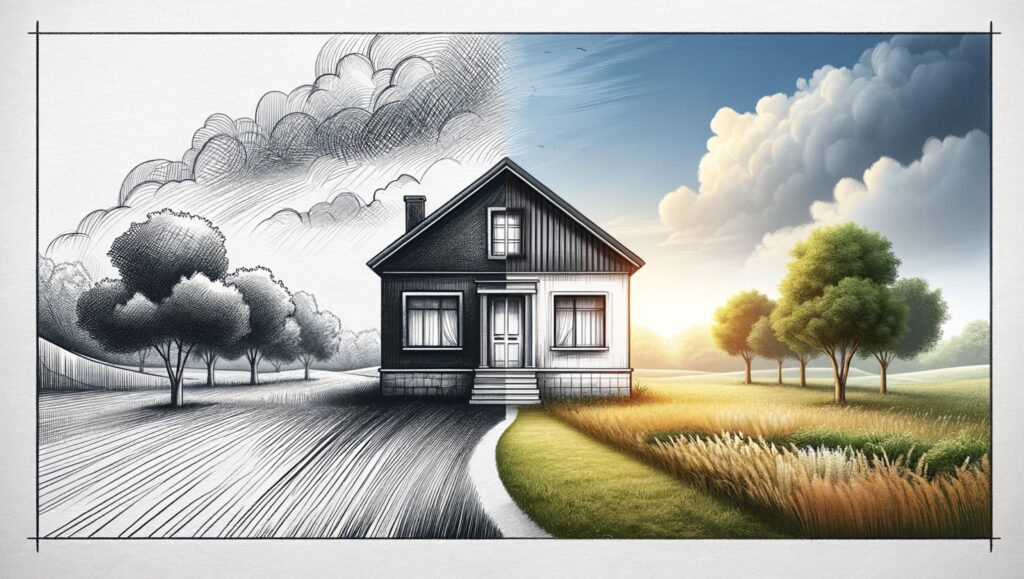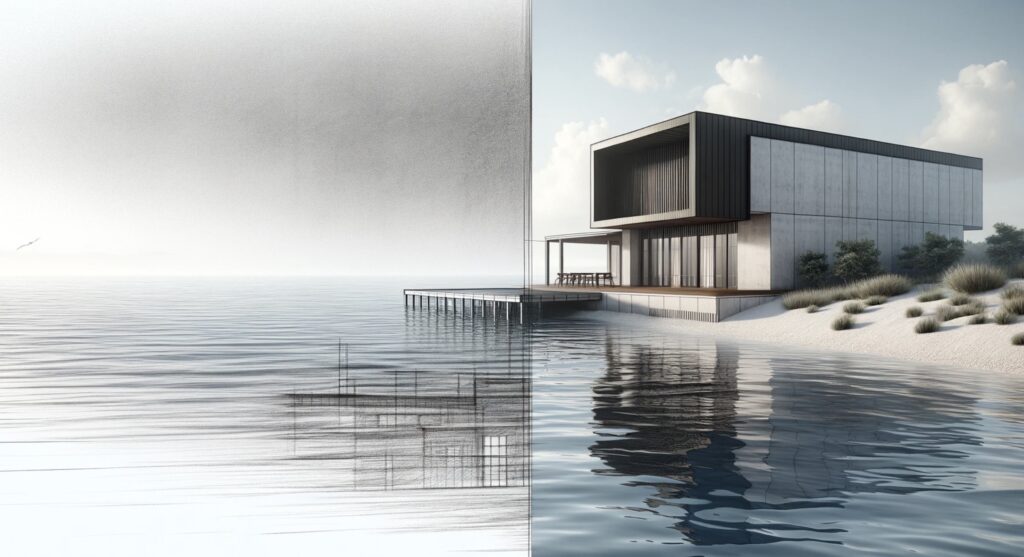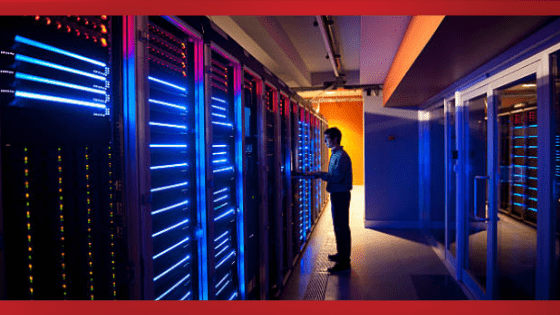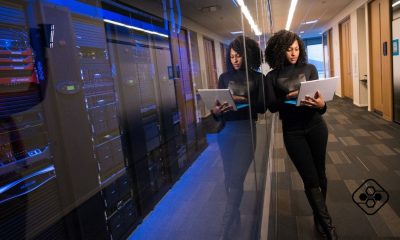Business Imprint
3DS Max Render Farms: The Backbone of 3D Modelling in Video Games, Film, and Architecture
As a 3D artist, I have come to appreciate the importance of render farms in the video game, film, and architecture industries. A render farm is a cluster of computers that work together to render 3D models or animations. It is a powerful tool that can save time and increase productivity by distributing the rendering workload across multiple machines.
One of the most popular software used in 3D modelling is 3DS Max. It is a powerful tool used in architecture, product design, and entertainment industries. However, rendering high-quality 3D models can be time-consuming, especially for complex scenes. This is where 3DS Max render farm come in. By utilizing the power of multiple machines, 3DS Max render farms can significantly reduce the time it takes to render complex scenes, allowing artists to focus on other aspects of their work.

Render farms have become an essential part of the 3D modelling pipeline. They have revolutionized the way 3D artists work by providing a cost-effective and efficient solution to the rendering process. In this article, we will explore the benefits of render farms, especially 3DS Max render farms, and how they are used in the video game, film, and architecture industries.

Overview of Render Farms
As a 3D artist, I know how time-consuming it can be to render high-quality images or animations. That’s where render farms come in. A render farm is a cluster of computers that work together to render images or animations quickly and efficiently.
Render farms are commonly used in the video game, film, and architecture industries, where 3D modelling is a crucial part of the production process. By using a render farm, artists can speed up the rendering process and produce high-quality images or animations in a shorter amount of time.
One popular software used in the 3D modelling industry is 3DS Max. A 3DS Max render farm is a cluster of computers specifically designed to render 3DS Max files. With a 3DS Max render farm, artists can render complex scenes with high polygon counts, realistic lighting, and intricate textures without having to worry about long rendering times.
In addition to saving time, render farms also allow artists to work on multiple projects simultaneously. By offloading rendering tasks to a render farm, artists can focus on creating new content, improving their workflow, and meeting tight deadlines.
Overall, render farms are an essential tool for 3D artists in the video game, film, and architecture industries. They provide a cost-effective way to render high-quality images or animations quickly and efficiently, allowing artists to focus on what they do best – creating stunning 3D content.

3DS Max Render Farm Specifics
When it comes to 3D modelling, rendering is an essential process that can take hours or even days to complete. This is where a 3DS Max render farm comes in handy. As someone who has used 3DS Max extensively, I can attest to the benefits of using a render farm to speed up the rendering process.
A 3DS Max render farm is a network of computers that work together to render a 3D model. By distributing the rendering workload across multiple machines, the rendering time is significantly reduced. This is especially useful for large-scale projects that require high-quality renders.
One of the key advantages of using a 3DS Max render farm is the ability to render multiple frames simultaneously. This means that instead of rendering one frame at a time, the render farm can render multiple frames at once, drastically reducing the overall rendering time. In addition, a render farm can handle complex lighting and shading effects, which can be difficult to render on a single machine.
Another benefit of using a 3DS Max render farm is the ability to scale up or down depending on the project’s needs. This means that you can add or remove machines from the network depending on the size of the project. This allows for greater flexibility and cost-effectiveness, as you only pay for the machines you need.
Overall, a 3DS Max render farm is an essential tool for anyone working in the video game, film, or architecture industries. It can significantly reduce rendering times and improve the quality of the final product. If you’re working on a project that requires high-quality renders, I highly recommend considering the use of a 3DS Max render farm.
Render Farms in Video Game Development
As a 3D artist in the video game industry, I understand the importance of render farms in our workflow. Render farms help us to render high-quality images and animations in a shorter amount of time, which is crucial in meeting tight deadlines. In this section, I will discuss the considerations for real-time rendering and the integration of render farms with game engines.
Real-Time Rendering Considerations
Real-time rendering is a critical aspect of video game development. It requires a high level of optimization to maintain a consistent frame rate. Render farms can assist in this process by rendering assets and lighting separately, which can then be imported into the game engine. This helps to reduce the amount of processing power required by the game engine, resulting in smoother gameplay.
Another consideration for real-time rendering is the use of dynamic lighting. Render farms can assist in the pre-calculation of lighting, which can then be integrated into the game engine. This helps to reduce the amount of processing power required by the game engine, resulting in smoother gameplay.
Integration with Game Engines
The integration of render farms with game engines is crucial in maintaining a streamlined workflow. Many game engines, such as Unity and Unreal Engine, have built-in support for render farms. This allows for the seamless transfer of assets between the game engine and the render farm.
Render farms can also assist in the creation of high-quality cinematics and cutscenes. By rendering these separately from the game engine, the quality of the final product can be significantly improved. This helps to create a more immersive experience for the player.
In conclusion, render farms are a crucial component in the video game development process. They assist in the creation of high-quality assets and lighting, as well as the optimization of real-time rendering. The integration of render farms with game engines helps to maintain a streamlined workflow, resulting in a more immersive experience for the player.
Render Farms in the Film Industry
As a 3D artist working in the film industry, I have seen firsthand how important render farms are for creating the stunning visuals that audiences expect. Render farms are a crucial tool for handling the massive amounts of data required to create high-quality 3D models and animations.
High-Resolution Rendering
One of the main benefits of using a render farm in the film industry is the ability to render high-resolution images quickly. With the increasing demand for high-quality visuals in movies, TV shows, and commercials, it’s essential to have a powerful rendering solution that can handle large-scale projects.
Render farms can distribute the rendering workload across multiple machines, allowing artists to render high-resolution images in a fraction of the time it would take on a single computer. This not only speeds up the production process but also ensures that projects are completed on time and within budget.
Special Effects and Animation
In addition to high-resolution rendering, render farms are also essential for creating special effects and animations. From explosions and fire to realistic water and weather effects, special effects are an integral part of modern filmmaking.
Render farms can handle the complex calculations required for creating these effects, allowing artists to focus on the creative aspects of their work. With the ability to render complex scenes quickly, artists can experiment with different lighting, camera angles, and effects without worrying about long render times.
Overall, render farms are a critical tool for 3D artists working in the film industry. By providing the processing power needed to handle large-scale projects and complex effects, render farms allow artists to focus on their creative vision and bring their ideas to life on the big screen.
Render Farms in Architecture
As an architect, I have found render farms to be an indispensable tool for creating high-quality visualizations of my designs. Render farms allow me to render large and complex 3D models quickly and efficiently, which is essential when working on tight deadlines.
Architectural Visualization
One of the key benefits of using a render farm for architectural visualization is the ability to create photorealistic images that accurately represent the design. This is particularly important when presenting designs to clients or stakeholders, as it allows them to visualize the final product in great detail.
Render farms also allow me to experiment with different materials, lighting, and camera angles, which can help me refine the design and make better decisions about the final product. This level of detail and accuracy is essential in the architecture industry, where every detail matters.
Virtual Walkthroughs
Another way that render farms are used in the architecture industry is for creating virtual walkthroughs. These are essentially 3D animations that allow clients to explore the design in a more immersive way.
Virtual walkthroughs can be used to showcase different design options, demonstrate how the space will be used, and provide a more detailed understanding of the design. This can be particularly useful for large and complex projects, where it may be difficult to visualize the final product from 2D plans alone.
Overall, render farms are an essential tool for architects who want to create high-quality visualizations and virtual walkthroughs of their designs. By using a render farm, I can save time, improve accuracy, and create a more immersive experience for my clients.
Technical Aspects of Render Farms
Hardware Components
The hardware components of a render farm are crucial to its performance. The most important component is the CPU, which is responsible for processing the rendering tasks. A render farm may have multiple CPUs, each with multiple cores, to handle large and complex renderings efficiently.
In addition to CPUs, render farms also require a large amount of RAM to store the data and instructions required for rendering. The amount of RAM required depends on the size and complexity of the rendering.
Storage is another important component of a render farm. The render farm must have enough storage capacity to store the 3D models, textures, and other assets required for rendering. The storage must also be fast enough to keep up with the rendering tasks.
Network Infrastructure
The network infrastructure of a render farm is also critical to its performance. A render farm typically consists of multiple computers connected to a network. The network must be fast and reliable to ensure that the rendering tasks are distributed efficiently and completed on time.
Render farms may use a variety of network topologies, including client-server, peer-to-peer, and cloud-based architectures. Each topology has its advantages and disadvantages, and the choice depends on the specific requirements of the rendering project.
Software and Automation
The software and automation tools used in a render farm are essential for managing the rendering tasks efficiently. Render farms use specialized rendering software, such as 3DS Max, to process the rendering tasks.
Automation tools, such as job schedulers and render managers, are used to manage the rendering tasks and distribute them across the network. These tools help to optimize the rendering process and ensure that the tasks are completed on time.
In addition, render farms may use monitoring and reporting tools to track the progress of the rendering tasks and identify any issues that may arise. These tools help to ensure that the rendering process is running smoothly and that the final output is of the highest quality.
Challenges and Solutions in Render Farming
Scalability Issues
One of the major challenges in render farming is scalability. As projects grow in complexity and size, the demand for computing resources increases exponentially. This can lead to long rendering times and potentially missed deadlines. To overcome this challenge, it is important to have a flexible and scalable infrastructure that can handle the workload. One solution is to use cloud-based render farms that can dynamically allocate resources based on demand. This can help to reduce rendering times and improve overall efficiency.
Data Security
Another challenge in render farming is data security. With large amounts of sensitive data being processed, it is important to ensure that the data is protected from unauthorized access and cyber-attacks. To mitigate this risk, it is important to implement strong security measures such as encryption, access controls, and firewalls. It is also important to regularly monitor and audit the system to identify any potential vulnerabilities and address them promptly.
Cost Management
Render farming can be a costly endeavor, especially for smaller studios or independent artists. To manage costs, it is important to carefully plan and budget for the project. This includes estimating the required resources and selecting the most cost-effective solution. It is also important to optimize the rendering process to minimize the amount of time and resources required. This can be achieved through techniques such as distributed rendering and efficient scene management.
In summary, render farming presents several challenges that can impact the efficiency and success of a project. By implementing scalable infrastructure, strong security measures, and cost-effective solutions, these challenges can be mitigated and the rendering process can be optimized for maximum efficiency.
Future of Render Farms
Technological Advancements
As technology continues to advance, the future of render farms looks promising. With the development of new hardware and software, render farms will be able to process more data at faster speeds, allowing for quicker turnaround times and improved efficiency.
One of the most significant technological advancements in recent years is the use of GPU rendering. This technology has revolutionized the way render farms operate, as it allows for faster rendering times and improved quality. As GPU technology continues to improve, we can expect to see even more significant advancements in the future.
Cloud-Based Solutions
Cloud-based solutions like the RANCH are becoming increasingly popular in the world of render farms. This technology allows for greater flexibility, as users can access their render farms from anywhere in the world. Additionally, cloud-based solutions are often more cost-effective than traditional render farms, as users only pay for the resources they need.
As cloud technology continues to improve, we can expect to see even more significant advancements in the world of render farms. Cloud-based solutions will become more accessible and affordable, allowing even small businesses to take advantage of the benefits of render farms.
Sustainability in Rendering
Sustainability is becoming an increasingly important issue in the world of rendering. As the demand for rendering services continues to grow, it is important to consider the environmental impact of these services.
Many render farms are now taking steps to reduce their carbon footprint. This includes using renewable energy sources, such as solar and wind power, and implementing energy-efficient hardware and software. As the importance of sustainability continues to grow, we can expect to see more render farms taking similar steps to reduce their impact on the environment.
In conclusion, the future of 3D render farm is bright. With the continued development of technology, the rise of cloud-based solutions, and a growing focus on sustainability, we can expect to see even more significant advancements in the world of rendering in the years to come.
-

 Manage Your Business2 days ago
Manage Your Business2 days agoTOP 10 VoIP providers for Small Business in 2024
-

 Cyber Risk Management6 days ago
Cyber Risk Management6 days agoHow Much Does a Hosting Server Cost Per User for an App?
-

 Outsourcing Development6 days ago
Outsourcing Development6 days agoAll you need to know about Offshore Staff Augmentation
-

 Software Development6 days ago
Software Development6 days agoThings to consider before starting a Retail Software Development
-
Edtech2 days ago
How to fix PII_EMAIL_788859F71F6238F53EA2 Error
-

 Grow Your Business6 days ago
Grow Your Business6 days agoThe Average Size of Home Office: A Perfect Workspace
-
Solution Review6 days ago
Top 10 Best Fake ID Websites [OnlyFake?]
-
Business Imprint6 days ago
How Gaming Technologies are Transforming the Entertainment Industry









